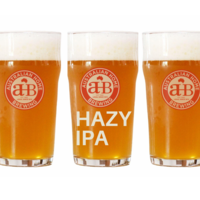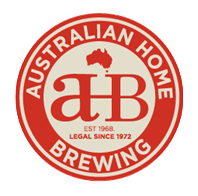How To Make Hazy Homebrew
Date Posted:22 July 2021

This beer haze can be created by using various brewing techniques. The goal of a hazy IPA brewer is to capture fruity aromas, reduce bitterness (found in a standard IPA) and create a creamy mouthfeel ! Delicious !
How to make home brew ‘hazy’
As the ‘haze craze’ continues gaining momentum in craft brewing circles and the wider beer drinking community, brewers and hazy consumers alike are showing no signs of renouncing this juicy satisfying beverage; the hazy IPA’s are here to stay…which is terrific as we love them and experimenting different brew recipes warms our cockles! We sometimes get asked what makes the beer hazy so we thought we’d share some knowledge…
Why are hazy beers popular?
Some hazy IPA drinkers get a little obsessed with the haziness of their beer, it’s now a very desirable attribute in beers of this ilk. Yet, interestingly, the haze never was the brewers’ goal. ‘The haze is a by-product of trying to make the most aromatically hoppy beer we can’ says Zach Page, director of brewing at Trillium Brewing Co.[1] This is the aim of the hazy beer brewer. It’s all about the flavour, the mouthfeel and delicious, fruity aromas that create a juicy unique beer that has been a winner. And the haze, while a by-product, is now a talked about feature of this style of beer,
What causes the ‘haze’ in hazy beer?
The beer haze can be created by using various brewing techniques. The goal of a hazy IPA homebrew is to capture fruity aromas, reduce bitterness (found in a standard IPA) and create a creamy mouthfeel.
The four main ways to make home brew hazy are:
1. Using high protein grains like wheat, oats and spelt
The famous German style hefeweizen is an excellent example of a wheat beer using protein and yeast to produce slightly cloudy, refreshing beer. At least 50% malted wheat is used with ‘hefe’, the distinctive, fruity yeast strain that remains in suspension giving the beer its cloudy appearance. With an aromatic hint of banana and clove, this beer is best served in what the Germans call a weizen glass to display the lovely, amber haze that this well-loved beer is known for. The Belgian witbier is another example of a popular hazy wheat beer using high proteins such as unmalted wheat, oats or malted barley which adds to the cloudy white beer colour.
2. Using particular yeast strains
Using medium-to-low flocculating yeast in brewing is favoured for contributing haze to the final brew as these yeast particles stay suspended after fermentation has ended. If a high flocculating yeast is used, the large clumps of yeast clump together and fall to the bottom of the fermenter permitting a clearer beer.
3. Bottle conditioning or ‘secondary fermentation’
In addition to the low-flocculated yeast-derived haze, the technique of bottle conditioning or ‘secondary fermentation’ can also contribute to beer haze. This involves adding carbonation drops (essentially sugar) to the bottles before capping and allowing the sugars to ferment in the bottle to boost carbonation pressure. *It should be noted that relying solely on low flocculating yeast strains and bottle conditioning to produce haze is not as reliable as the choice of grain and dry hopping.
4. Dry Hopping
Dry hopping - adding generous amounts of fruity hop pellets at the end of the boiling process after the first fermentation creates haze a well as desirable aromas. Sometimes the term ‘double dry-hopped’ (DDH) is used which just refers to the large volume of hops added to the beer. Dry hopping boosts the aromas and allows the polyphenols from the hops to combine with protein in the beer and form the haze. It doesn’t affect the beer flavour and is common in styles like the New England IPA.
Hazy beers have rightly cemented their place on the beer lists of the best craft breweries around the world and their popularity is not surprisingly increasing year on year. For home brewers this is excellent news. At AHB, we’ve done our research (well…someone has to do it!) and have put together what we consider to be the best examples from the best hazy styles:
